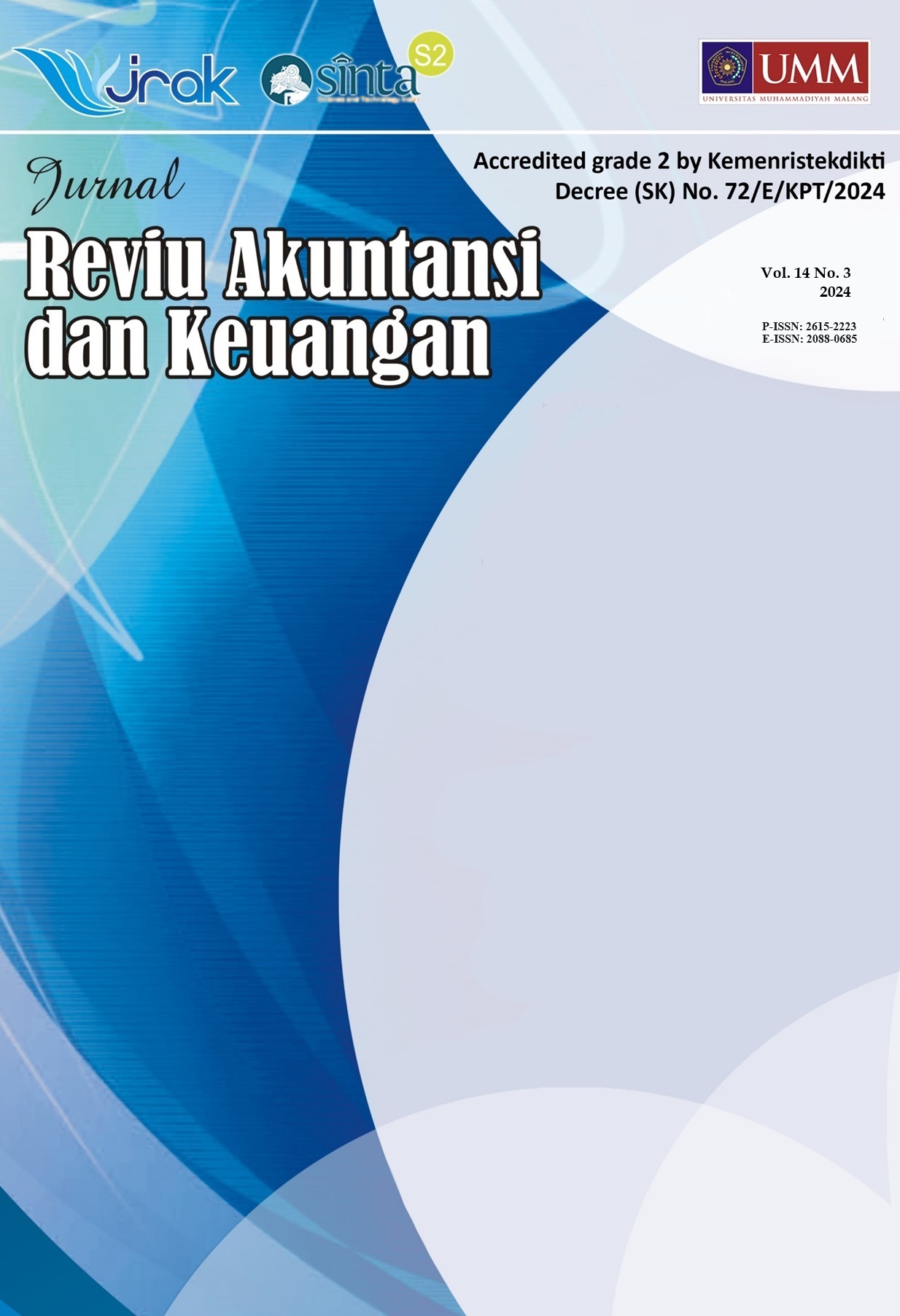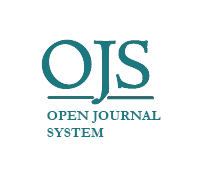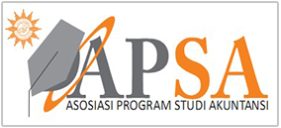Niat Melakukan Islamic Online Donation Pada Generasi Z: Peran Attitude Sebagai Mediator Pada Model UTAUT-3
DOI:
https://doi.org/10.22219/jrak.v14i3.35224Keywords:
Digital, Donation, Habit, Islamic, Personal InnovativenessAbstract
Purpose: This study aims to examine the effect of the UTAUT-3 model, namely performance expectancy, habit, and personal innovativeness on the intention to make Islamic online donations mediated by attitude in generation Z.
Methodology/ approach: This study uses a survey method by distributing questionnaires online. The sample in this study were 180 respondents. We use SEM-PLS to analyze data.
Findings: The results show that performance expectancy and personal innovativeness affect attitude, while habit does not affect. The intention to do Islamic online donation is influenced by performance expectancy, habit, personal innovativeness, and attitude. Attitude can mediate the relationship between performance expectancy and personal innovativeness with the intention to pay ZIS online. However, the effect of habit on online ZIS payment intentions cannot be mediated by attitude.
Practical implications: As Generation Z dominates the population in Indonesia, this generation has high potential in ZIS collection. ZIS Institutions can further promote the convenience of online ZIS payments.
Originality/value: This study uses personal innovativeness as a construct of UTAUT-3 in the intention to Islamic online donation.
Downloads
References
Agarwal, R., & Prasad, J. (1998). A conceptual and operational definition of personal innovativeness in the domain of information technology. Information systems research, 9(2), 204-215.
Aji, H. M., Albari, A., Muthohar, M., Sumadi, S., Sigit, M., Muslichah, I., & Hidayat, A. (2021). Investigating the determinants of online infaq intention during the COVID-19 pandemic: an insight from Indonesia. Journal of Islamic Accounting and Business Research, 12(1), 1-20.
Ajzen, I. (1991). The Theory of Planned Behavior. Organizational Behavior and Human Decision Proccess.
Anjelina, E. D., Salsabila, R., & Fitriyanti, D. A. (2020). Peranan Zakat, Infak dan Sedekah dalam Meningkatkan Kesejahteraan Ekonomi Masyarakat. Jihbiz: Jurnal Ekonomi, Keuangan dan Perbankan Syariah, 4(2), 136-147.
Baznas. (2023). Outlook Zakat Indonesia 2023. Puskas Baznas.
Belanche, D., Casaló, L. V., & Flavián, C. (2019). Artificial Intelligence in FinTech: understanding robo-advisors adoption among customers. Industrial Management & Data Systems, 119(7), 1411-1430.
Bhattacherjee, A., & Premkumar, G. (2004). Understanding changes in belief and attitude toward information technology usage: A theoretical model and longitudinal test. MIS quarterly, 229-254.
Bhuiyan, K. H., Ahmed, S., & Jahan, I. (2024). Consumer attitude toward using artificial intelligence (AI) devices in hospitality services. Journal of Hospitality and Tourism Insights(ahead-of-print).
Cao, J., Shang, Y., Mok, Q., & Lai, I. K.-W. (2019). The impact of personal innovativeness on the intention to use cloud classroom: an empirical study in China. Technology in Education: Pedagogical Innovations: 4th International Conference, ICTE 2019, Guangzhou, China, March 15-17, 2019, Revised Selected Papers 4,
Childers, C., & Boatwright, B. (2021). Do digital natives recognize digital influence? Generational differences and understanding of social media influencers. Journal of Current Issues & Research in Advertising, 42(4), 425-442.
Criollo-C, S., Guerrero-Arias, A., Jaramillo-Alcázar, Á., & Luján-Mora, S. (2021). Mobile learning technologies for education: Benefits and pending issues. Applied Sciences, 11(9), 4111-4111.
Davis, F. D. (1989). Perceived usefulness, perceived ease of use, and user acceptance of information technology. MIS quarterly, 319-340.
Dawami, Q. (2020). Factors influencing the preference of customers towards Islamic banking: Evidence from Malaysia. Journal of Islamic Economic Laws, 3(1), 48-67.
Djimesah, I. E., Zhao, H., Okine, A. N. D., Li, Y., Duah, E., & Mireku, K. K. (2022). Analyzing the technology of acceptance model of Ghanaian crowdfunding stakeholders. Technological Forecasting and Social Change, 175, 121323-121323.
Dwivedi, Y. K., Rana, N. P., Jeyaraj, A., Clement, M., & Williams, M. D. (2019). Re-examining the unified theory of acceptance and use of technology (UTAUT): Towards a revised theoretical model. Information Systems Frontiers, 21, 719-734.
Efrata, T. C. (2023). PERSONAL INNOVATIVENESS, PERCEIVED USEFULNESS, PERCEIVED EASE OF USE, AND TRUST ASDETERMINANTS OF MOBILE PAYMENT UTILIZATION. Review of Management and Entrepreneurship, 7(2).
El Alfy, S., & Kehal, M. (2024). Investigating the factors affecting educators’ adoption of learning analytics using the UTAUT model. The International Journal of Information and Learning Technology.
Escobar-Rodríguez, T., & Carvajal-Trujillo, E. (2014). Online purchasing tickets for low cost carriers: An application of the unified theory of acceptance and use of technology (UTAUT) model. Tourism management, 43, 70-88.
Farooq, M. S., Salam, M., Jaafar, N., Fayolle, A., Ayupp, K., Radovic-Markovic, M., & Sajid, A. (2017). Acceptance and use of lecture capture system (LCS) in executive business studies: Extending UTAUT2. Interactive Technology and Smart Education, 14(4), 329-348.
Ghalandari, K. (2012). The effect of performance expectancy, effort expectancy, social influence and facilitating conditions on acceptance of e-banking services in Iran: The moderating role of age and gender. Middle-East Journal of Scientific Research, 12(6), 801-807.
Hair, J. F., Black, W. C., Babin, B. J., & Anderson, R. E. (2019). Multivariate data analysis (8. Baskı). Eight Edition, Cengage: Learning EMEA.
Hair, J. F., Ringle, C. M., & Sarstedt, M. (2013). Partial least squares structural equation modeling: Rigorous applications, better results and higher acceptance. Long range planning, 46(1-2), 1-12.
Hapsari, M. I., & Abidin, Z. (2016). Zakat distribution in maqasid al-shariah framework. Journal of Islamic Financial Studies, 2(02).
Hossain, A., Quaresma, R., & Rahman, H. (2019). Investigating factors influencing the physicians’ adoption of electronic health record (EHR) in healthcare system of Bangladesh: An empirical study. International Journal of Information Management, 44, 76-87.
Hossain, M. A., Amin, R., Masud, A. A., Hossain, M. I., Hossen, M. A., & Hossain, M. K. (2023). What drives people’s behavioral intention toward telemedicine? an emerging economy perspective. SAGE Open, 13(3), 21582440231181394-21582440231181394.
Hulland, J. (1999). Use of partial least squares (PLS) in strategic management research: A review of four recent studies. Strategic management journal, 20(2), 195-204.
Indonesia, C. N. N. (2023). Indonesia Jadi Negara Paling Dermawan di Dunia untuk Keenam Kalinya Baca artikel CNN Indonesia "Indonesia Jadi Negara Paling Dermawan di Dunia untuk Keenam Kalinya" selengkapnya di sini: https://www.cnnindonesia.com/gaya-hidup/20231122094358-277-1027392/indonesia-jadi-negara-paling-dermawan-di-dunia-untuk-keenam-kalinya. In.
Janssen, D., & Carradini, S. (2021). Generation Z workplace communication habits and expectations. IEEE Transactions on Professional Communication, 64(2), 137-153.
Jiang, Y., Ahmad, H., Butt, A. H., Shafique, M. N., & Muhammad, S. (2021). QR digital payment system adoption by retailers: the moderating role of COVID-19 knowledge. Information Resources Management Journal (IRMJ), 34(3), 41-63.
Jocevski, M., Ghezzi, A., & Arvidsson, N. (2020). Exploring the growth challenge of mobile payment platforms: A business model perspective. Electronic Commerce Research and Applications, 40, 100908-100908.
Kabir, M. R., Sobhani, F. A., & Kausar, A. (2017). Management of Sadaqah through social enterprises: A study on Anjuman Mufidul Islam Bangladesh.
Kasilingam, D. L. (2020). Understanding the attitude and intention to use smartphone chatbots for shopping. Technology in Society, 62, 101280-101280.
Kasri, R. A., & Sosianti, M. W. (2023). Determinants of the intention to pay zakat online: The case of Indonesia. Journal of Islamic Monetary Economics and Finance, 9(2), 275-294.
Kasri, R. A., & Yuniar, A. M. (2021). Determinants of digital zakat payments: lessons from Indonesian experience. Journal of Islamic Accounting and Business Research, 12(3), 362-379.
Kelly, S., Kaye, S.-A., & Oviedo-Trespalacios, O. (2023). What factors contribute to the acceptance of artificial intelligence? A systematic review. Telematics and Informatics, 77, 101925-101925.
Khan, S., Khan, S. U., Khan, I. U., Khan, S. Z., & Khan, R. U. (2023). Understanding consumer adoption of mobile payment in Pakistan. Journal of Science and Technology Policy Management(ahead-of-print).
Kim, D.-Y., Moon, M., & Kim, J.-S. (2022). A Study on the Acceptance Intention of Robotic Process Automation Using Integrated Technology Acceptance Model. Journal of the Korean Society of Supply Chain Management. https://doi.org/10.25052/kscm.2022.5.22.1.19
Kim, M. J., & Hall, C. M. (2020). What drives visitor economy crowdfunding? The effect of digital storytelling on unified theory of acceptance and use of technology. Tourism Management Perspectives, 34, 100638-100638.
Lattu, A., & Maulana, A. (2023). Determinant Factors of Personal Innovativeness in Information Technology of Ride-Hailing New Brand: The Role of Gender. International Journal of Health Engineering and Technology (IJHET), 2(2).
Lee, S., Jones-Jang, S. M., Chung, M., Kim, N., & Choi, J. (2024). Who is using ChatGPT and why? Extending the Unified Theory of Acceptance and Use of Technology (UTAUT) model. Information Research an international electronic journal, 29(1), 54-72.
Liébana-Cabanillas, F., Kalinic, Z., Muñoz-Leiva, F., & Higueras-Castillo, E. (2024). Biometric m-payment systems: A multi-analytical approach to determining use intention. Information & Management, 61(2), 103907-103907.
Limayem, M., Hirt, S. G., & Cheung, C. M. K. (2007). How habit limits the predictive power of intention: The case of information systems continuance. MIS quarterly, 705-737.
Lin, R.-R., Zheng, Y., & Lee, J.-C. (2023). Artificial intelligence-based pre-implementation interventions in users' continuance intention to use mobile banking. International Journal of Mobile Communications, 21(4), 518-540.
Madugba, J., Ben-caleb, E., Uzoka, N., Onuoha, C., Godwin, M., Agbiogwu, A., & James, D. (2024). Self-Assessment Regime, Tax Compliance, And Tax Administration: Evidence From Emerging Economy. Journal of Multiperspectives on Accounting Literature, 2(1), 43-56.
Mahmud, A., Sarower, A. H., Sohel, A., Assaduzzaman, M., & Bhuiyan, T. (2024). Adoption of ChatGPT by university students for academic purposes: Partial least square, artificial neural network, deep neural network and classification algorithms approach. Array, 21, 100339-100339.
Milicevic, N., Kalas, B., Djokic, N., Malcic, B., & Djokic, I. (2024). Students’ Intention toward Artificial Intelligence in the Context of Digital Transformation. Sustainability, 16(9), 3554-3554.
Mishra, A., Shukla, A., Rana, N. P., Currie, W. L., & Dwivedi, Y. K. (2023). Re-examining post-acceptance model of information systems continuance: A revised theoretical model using MASEM approach. International Journal of Information Management, 68, 102571-102571.
Moriuchi, E. (2021). An empirical study of consumers' intention to use biometric facial recognition as a payment method. Psychology & Marketing, 38(10), 1741-1765.
Muqtadiroh, F. A., Herdiyanti, A., & Puspitasari, N. (2020). The e-learning quality model to examine students’ behavioral intention to use online learning platform in a higher education institution. Khazanah Informatika: Jurnal Ilmu Komputer dan Informatika, 6(2).
Najib, M., & Fahma, F. (2020). Investigating the adoption of digital payment system through an extended technology acceptance model: An insight from the Indonesian small and medium enterprises. International Journal on Advanced Science, Engineering and Information Technology, 10(4), 1702-1708.
Nazmi, N., Azizah, S. N., & Santoso, S. B. (2024). Model Utaut Pada Perilaku Penggunaan Aplikasi Praktik Akuntansi. Jurnal Akademi Akuntansi, 7(1), 20-36.
Neal, D. T., Wood, W., & Drolet, A. (2013). How do people adhere to goals when willpower is low? The profits (and pitfalls) of strong habits. Journal of Personality and Social Psychology, 104(6), 959-959.
Nguyen, D. M., Chiu, Y.-T. H., & Le, H. D. (2021). Determinants of continuance intention towards banks’ chatbot services in Vietnam: A necessity for sustainable development. Sustainability, 13(14), 7625-7625.
Nguyen, M. S. (2023). Factors affecting Gen Z’s intention to use QR Pay in Vietnam after Covid-19. Innovative Marketing, 19(3), 100-100.
Nimansa, A. T., & Kuruwitaarachchi, N. (2020). A Study on Finding the Factors, Hindering the use of digital wallets among youth in Developing Countries. Scholedge International Journal of Management & Development, 7(6).
Octavius, G. S., & Antonio, F. (2021). Antecedents of intention to adopt mobile health (mHealth) application and its impact on intention to recommend: An evidence from Indonesian customers. International journal of telemedicine and applications, 2021(1), 6698627-6698627.
Oktavendi, T. W., & Mu'ammal, I. (2022). Acceptance model for predicting adoption of Zakat, Infaq, and Sodaqoh (ZIS) digital payments in Generation Z. Journal of Islamic Accounting and Business Research, 13(4), 684-700.
Ouellette, J. A., & Wood, W. (1998). Habit and intention in everyday life: The multiple processes by which past behavior predicts future behavior. Psychological bulletin, 124(1), 54-54.
Patil, P., Tamilmani, K., Rana, N. P., & Raghavan, V. (2020). Understanding consumer adoption of mobile payment in India: Extending Meta-UTAUT model with personal innovativeness, anxiety, trust, and grievance redressal. International Journal of Information Management, 54, 102144-102144.
Puspitasari, I., Wiambodo, A. N. R., & Soeparman, P. (2021). The impact of expectation confirmation, technology compatibility, and customer’s acceptance on e-wallet continuance intention. AIP conference proceedings,
Rana, N. P., Dwivedi, Y. K., Lal, B., Williams, M. D., & Clement, M. (2017). Citizens’ adoption of an electronic government system: towards a unified view. Information Systems Frontiers, 19, 549-568.
Rasiah, D., & Yen, Y. Y. (2020). User acceptance of ATM biometric authentication. Global Journal of Computer Sciences: Theory and Research, 10(1), 11-17.
Roh, T., Park, B. I., & Xiao, S. S. (2023). Adoption of AI-enabled Robo-advisors in Fintech: Simultaneous Employment of UTAUT and the Theory of Reasoned Action. Journal of Electronic Commerce Research, 24(1), 29-47.
Rosli, M. S., Sal
Downloads
Published
Issue
Section
License
Copyright (c) 2024 Dewita Puspawati, Novel Idris Abas, Kurnia Rina Ariani

This work is licensed under a Creative Commons Attribution-NonCommercial-ShareAlike 4.0 International License.

Jurnal Reviu Akuntansi dan Keuangan is licensed under a Creative Commons Attribution-NonCommercial-ShareAlike 4.0 International License.
Authors who publish with this journal agree to the following terms:
- Authors retain copyright and grant the journal right of first publication with the work simultaneously licensed under a Creative Commons Attribution-NonCommercial-ShareAlike 4.0 International License that allows others to share the work with an acknowledgement of the work's authorship and initial publication in this journal.
- Authors are able to enter into separate, additional contractual arrangements for the non-exclusive distribution of the journal's published version of the work (e.g., post it to an institutional repository or publish it in a book), with an acknowledgement of its initial publication in this journal.
- Authors are permitted and encouraged to post their work online (e.g., in institutional repositories or on their website) prior to and during the submission process, as it can lead to productive exchanges, as well as earlier and greater citation of published work (See The Effect of Open Access).










